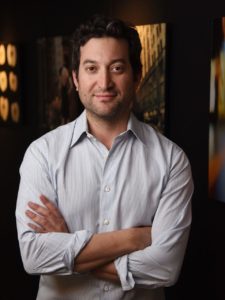Today no business promotion is complete without HD images. Relevant images are the most helpful in grabbing the attention of people for every type of business. Why only promotions? Images help create presentations, websites and fulfil many other purposes. But getting copyright-free images for a cheaper price is not easy. And no one wants to get hit by a copyright strike by just picking an image from the web either. Also hiring models and renting places for clicking those HD pictures is not pocket-friendly. So for these issues, websites like Shutterstock comes for the rescue, where you get lakhs of images for a cheap subscription fee. The website was developed by Jon Oringer in 2003, and since then it has been ruling the stock image industry.
Jon Oringer was born on 2 May 1974 in Scarsdale, New York. He got lucky to get to learn computer programming when he was studying in elementary school at the age of five. So he automatically became interested in programming. As a kid, he had already developed entrepreneurial skills, and when he went to high school, he developed photographs and taught guitar to make money. He completed his school education from the Scarsdale High School. As a teenager, he also repaired computers to earn some extra cash. With his programming skills, he was soon able to create small software and sold them to people.
In 1993, he joined the Stony Brook University to pursue a BS degree in computer science and mathematics. During this time, he built the world’s first pop-up blocker programme and sold over thousands of copies of the same. In 1997, he graduated with a bachelor’s degree and joined Columbia University, where he graduated with an MS in computer science. After the success of the pop-up blocker, he tried hands-on building a personal firewall, cookie blocker and other similar software and was sole owner and employee of about ten companies.
To promote his business, Jon Oringer chose e-mail marketing. But he found out that the mails with images had a better impact on people than without any. In the beginning, he bought stock photos for promotions, but later, it became quite expensive for him to buy images from the third party. So finally, he bought a camera and changed his hobby of photography to professional photography for his business. Later, he started posting the clicked and unused pictures online and invited people to use them. Eventually, it came out to be that he clicked around 100000 in just six months. So he decided to build a website, where he could put all the photographs for downloads.

In 2003, he developed and launched Shutterstock, a website, where he put 30,000 images filtered from his vast collection. These pictures were based on different scenarios and were best of the 100000 pictures Jon Oringer had clicked. Seeing a good business opportunity in expanding the photo stock business, he took some of his savings and rented a 600-square-foot office in New York for the company. The website offered subscription-based services and cost $49 a month. Like his other startups, Oringer initially took all the responsibilities himself. With time, he started joining his friends for the photography and to ccarry out other operations in the company.
Soon, with the expansion of the company, he ended up hiring professional photographers and contributors to fulfil the demands. In 2006, the company became the largest subscription-based photo-stock company, offering over 570,000 images. From August 2008, the company also started providing videos through its new platform named Shutterstock Footage, and in 2009, it launched Shutterstock for iPad offering free images to the users. It also introduced a new marketplace like Spectrum and Offset for high-quality images and videos.
Oringer filed for an initial public offering for ShutterStock public on the New York Stock Exchange, in May 2012, and in October of the same year, the company went public. After the IPO, the stock value of the company increased drastically, and in 2013, Oringer was a billionaire with a net worth of USD$1.05 billion. The company revenues of the same year reached $2.5 billion, and it also launched an Android app.
Along with new tools and features, the company also started collaborating with different companies, like in 2013, Facebook integrated Shutterstock into its Ad Creator tool. The next year, Salesforce also included the ShutterStock library to its platform. The company also formed a partnership with companies like Penske Media Corporation and Associated Press for a free license for access to their archives.
Oringer, with his skills and experience, took the right opportunity at the right time. This intelligent entrepreneur has been a guest speaker at various educational institutions. He has also received numerous awards for his achievements. In 2013, Business Insider named Oringer the coolest person in all of New York technology. He was also named as the New York’s Technology Entrepreneur of the Year by Ernst & Young.

Yashica is a Software Engineer turned Content Writer, who loves to write on social causes and expertise in writing technical stuff. She loves to watch movies and explore new places. She believes that you need to live once before you die. So experimenting with her life and career choices, she is trying to live her life to the fullest.
